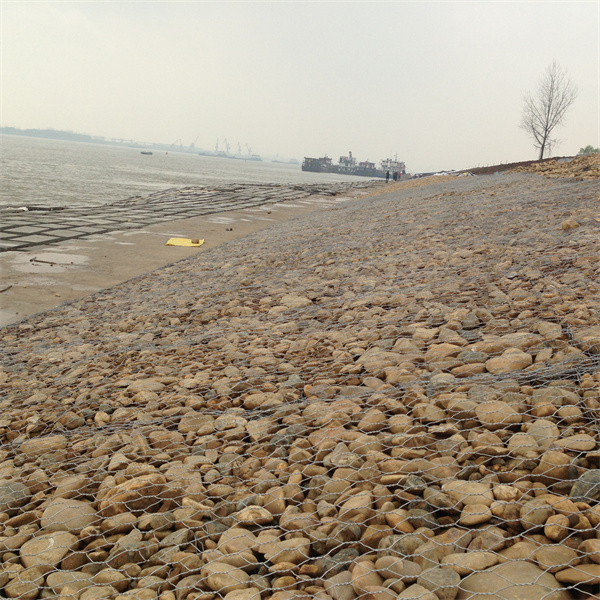nov . 08, 2024 19:14 Back to list
gabion retaining wall construction factory
Gabion Retaining Wall Construction A Comprehensive Overview
In the world of civil engineering and landscape architecture, retaining walls play a crucial role in preventing soil erosion, managing site drainage, and creating usable space on sloped terrains. Among the various types of retaining walls available, gabion walls have gained significant popularity due to their unique characteristics and advantages. This article explores the construction of gabion retaining walls, outlining their benefits, materials, and construction techniques.
What is a Gabion Retaining Wall?
A gabion retaining wall consists of wire mesh baskets filled with rock, stone, or other materials. These baskets are often made from galvanized steel or PVC-coated wire, providing durability and resistance to corrosion. The term gabion originates from the Italian word gabbione, meaning big cage, aptly describing their structure. Gabion walls can be utilized for various applications, including landscaping, erosion control, and as a structural support mechanism.
Advantages of Gabion Retaining Walls
1. Environmental Benefits One of the key advantages of gabion walls is their eco-friendliness. They allow water to flow through them, reducing hydrostatic pressure and minimizing the risk of erosion. This permeability supports the natural water table and promotes plant growth, blending the structure seamlessly with the landscape.
2. Cost-Effective Gabion walls are generally more cost-effective than traditional concrete walls. The materials used in their construction—such as local stone or recycled materials—can significantly reduce costs. Additionally, their construction often requires less skilled labor, further lowering expenses.
3. Aesthetic Versatility Gabion walls provide an aesthetically pleasing finish that can complement various landscape designs. The choice of stone or other fill materials can be tailored to fit the desired look, making them suitable for both rustic and contemporary designs.
Materials Used in Gabion Construction
The primary components of a gabion retaining wall are the wire mesh baskets and the fill materials. The wire mesh is typically made from galvanized steel or stainless steel to ensure longevity and resistance to rust. The fill material can vary widely, with options ranging from natural stones to recycled concrete and even glass. This versatility allows builders to choose materials that best suit both functional and aesthetic requirements.
gabion retaining wall construction factory

Construction Process
The construction of a gabion retaining wall involves several key steps
1. Site Preparation The first step in constructing a gabion wall is to prepare the site. This includes clearing the area of vegetation and debris, and ensuring proper drainage to prevent water accumulation behind the wall.
2. Foundation A solid foundation is essential for the stability of the wall. This often entails excavating a trench where the base of the gabion will sit. In some cases, a compacted gravel bed may be added for additional support.
3. Assembling Gabion Baskets The wire mesh baskets are assembled on-site or pre-assembled at a factory, depending on the design requirements. The baskets should be securely fastened to prevent them from collapsing during the filling process.
4. Filling the Gabions Once the baskets are in place, they are filled with the chosen material. It is crucial to pack the fill tightly to ensure the wall retains its shape and integrity. Each layer should be leveled before adding the next layer of baskets.
5. Capping After filling, the top of the gabion wall may be capped with a layer of flat stones or concrete to provide a finished look and prevent the fill from washing away.
6. Backfill and Landscaping Finally, soil is backfilled behind the wall, and landscaping can be done to blend the structure into the surrounding environment, which may include planting vegetation or adding decorative elements.
Conclusion
Gabion retaining walls represent a unique and effective solution for managing soil and water on sloped sites. Their combination of durability, cost-effectiveness, and environmental benefits make them an appealing choice for both residential and commercial projects. As construction practices evolve, gabion walls continue to stand out as a versatile and sustainable option in the realm of civil engineering and landscape design.
-
Why PVC Coated Gabion Mattress Is the Best Solution for Long-Term Erosion Control
NewsMay.23,2025
-
Gabion Wire Mesh: The Reinforced Solution for Modern Construction and Landscape Design
NewsMay.23,2025
-
Gabion Wall: The Flexible, Seismic-Resistant Solution for Modern Landscaping and Construction
NewsMay.23,2025
-
Gabion Wall Solutions: The Durable, Decorative, and Affordable Choice for Every Landscape
NewsMay.23,2025
-
Gabion Basket: The Durable and Flexible Alternative to Traditional Retaining Walls
NewsMay.23,2025
-
Gabion Basket: The Proven Solution for Slope Stability and Flood Control
NewsMay.23,2025
-
Versatility of Chain Link Fence Gabion
NewsMay.13,2025






